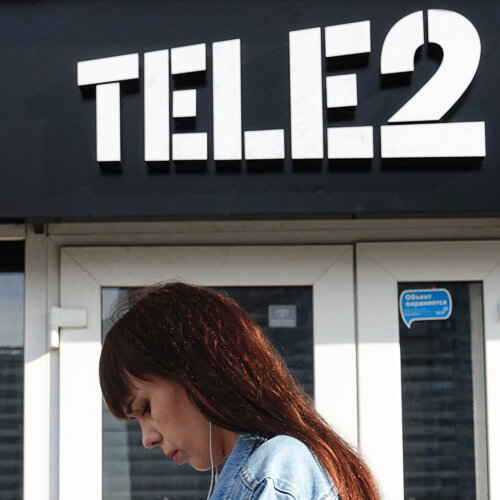Swedish operator sees continuing good momentum but remains on the post-pandemic recovery path in the consumer market.

Tele2, the self-styled "Baltic Sea challenger," was again in a relatively buoyant mood as it unveiled another set of solid quarterly results for the third quarter (Q3) to the end of September 2021.
Indeed, the operator appears to be increasingly confident of achieving its objectives as the year progresses, and noted that it has now achieved organic service revenue growth for the second consecutive quarter. Kjell Johnsen, president and CEO of Tele2, also pointed out that the B2B market in Sweden turned to growth for the first time in years.
Figure 1:  The right path: Tele2 is feeling buoyant about the future on another solid set or results.
The right path: Tele2 is feeling buoyant about the future on another solid set or results.
(Source: Aleksey Zotov / Alamy Stock Photo)
Commercial momentum is also starting to pick up in the Swedish B2C market. However, Hendrik de Groot, chief commercial officer, warned that Tele2 "is still not fully out of the woods … we're still on the recovery path."
Tele2, which operates in Sweden, Estonia, Latvia and Lithuania, has also just completed two important measures: first, it has agreed to sell its 25% stake in T-Mobile Netherlands for about €860 million (US$1 billion) as part of a wider agreement that will also see Deutsche Telekom sell its 75% stake in the Dutch operator to the Apax funds and Warburg Pincus. The entire transaction gives T-Mobile Netherlands an enterprise value of €5.1 billion ($5.9 billion).
Furthermore, Tele2 has extended 5G services to sub-brand Comviq, which focuses on low-cost offerings. 5G is already offered under the Tele2 brand. In Q3, end-user service revenue increased 2% year-on-year to 4.9 billion Swedish kronor ($569 million), attributed to strong performance in the Baltics, growth in Sweden and slight tailwind from roaming. Total revenue also increased 2% to SEK6.6 billion ($766 million).
Underlying EBITDAaL grew 5% to SEK2.6 billion ($302 million), attributed to end-user service revenue growth, cost savings and fewer headwinds related to the coronavirus pandemic.
However, net profit was down by SEK0.1 billion at SEK1.1 billion ($128 million), mainly owing to amortization on the Com Hem brand of SEK0.1 billion in Q3 2021 and a legal settlement of SEK0.1 billion in Q3 2020.
Building up
Johnsen said that Tele2 is maintaining its objective to become the "leading telco in the Nordic and Baltic region" and indeed is "even more confident about reaching the ambitions that we set out earlier this year."
He noted that the execution of the business automation program is progressing well.
"We're on track to deliver an annualized run rate of SEK500 million ($58 million) at the end of this year, and at least SEK1 billion ($116 million) at the end of 2022," he said. In terms of capex, Tele2 is investing heavily in its 5G and remote PHY deployments. Johnsen said remote PHY as a fixed network alternative is already showing promising signs in pilot projects. "When you come to this discussion about remote PHY versus fiber … remote PHY gives plenty of speed and reliability for the foreseeable future," Johnsen said.
Want to know more about 5G? Check out our dedicated 5G content channel here on
Light Reading.
"It's a natural upgrade path for us to clean up the node splits and to get a simpler infrastructure that is cheaper to operate and with even higher reliability. At the end of the day, if you use fiber you still have to buy quite expensive equipment to give higher speeds to the end user. So, it is a matter of pros and cons." In the mobile arena, Tele2 will continue to ramp up 5G rollout in Sweden in order to achieve majority population coverage by the end of 2023.
In terms of how the current problems with global supply chains might affect 5G deployment, Johnson said Tele2 has placed orders and is going into production mode. "At this point it doesn't look like it's going to be a big deal for us," he said.
"We are to some extent hedged, because in Sweden we are getting deliveries from both Ericsson and Nokia, and the way such contracts are structured, that gives us the opportunity, if need be, to adjust volumes, I don't think it will come to that but it is an opportunity that we have out there."
Related posts:
— Anne Morris, contributing editor, special to Light Reading
About the Author(s)
You May Also Like











